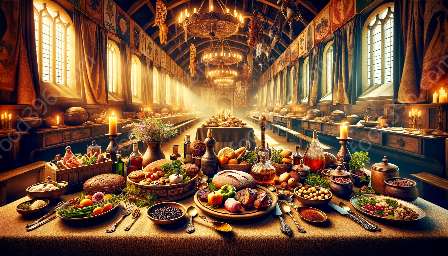The influence of trade routes on the development of medieval cuisine was profound, shaping the flavors, ingredients, and cooking techniques that defined the culinary landscape of the time. As trade routes expanded, they facilitated the exchange of culinary traditions, spices, and ingredients, leading to a fusion of diverse flavors and culinary practices across different regions. This article explores the intricate relationship between trade routes and medieval cuisine, shedding light on the historical, cultural, and gastronomic aspects of this fascinating journey.
Medieval Cuisine History
During the medieval period, European cuisine underwent significant transformations, driven in large part by the interplay of trade, culture, and culinary innovation. The diet of the medieval era was heavily influenced by the availability of ingredients, which, in turn, was shaped by trade routes and the exchange of goods between regions. Medieval cuisine was characterized by the use of locally available produce, as well as imported spices, herbs, and other culinary staples that traveled along the trade routes connecting Europe with Asia, Africa, and the Middle East.
Cuisine History
The history of cuisine is a tapestry woven with the threads of trade, exploration, and cultural exchange. The evolution of culinary traditions has been intricately linked to the movement of goods and people across continents, with trade routes serving as the conduits for the spread of culinary influences. From the Silk Road to the Spice Routes, trade networks have played a pivotal role in shaping the development of cuisines around the world, including the medieval culinary landscape.
Impact of Trade Routes on Medieval Cuisine
The impact of trade routes on medieval cuisine was multifaceted, encompassing a wide array of influences that transformed the culinary practices of the time. The exchange of goods and ideas along trade routes facilitated the introduction of novel ingredients, spices, and cooking techniques to different regions, leading to a diversification and enrichment of medieval culinary traditions. The availability of exotic spices such as cinnamon, cloves, and nutmeg, brought to Europe through trade routes, revolutionized the flavor profiles of medieval dishes, adding depth and complexity to the culinary repertoire.
Integration of Culinary Traditions
Trade routes were pivotal in fostering the integration of culinary traditions, as merchants and travelers disseminated cooking methods, recipes, and food customs across regions. As goods traversed the trade routes, so did the culinary expertise of diverse cultures, resulting in the blending of flavors and cooking styles. The culinary melting pot that emerged from this cross-cultural exchange laid the foundation for the rich tapestry of medieval cuisine, characterized by an amalgamation of flavors and techniques drawn from different corners of the world.
Regional Specialization and Culinary Exchange
Trade routes led to the specialization of certain regions in the production of specific foodstuffs, giving rise to a network of culinary exchanges that linked distant lands through a shared love for food. The Mediterranean, for instance, emerged as a hub for the trade of spices, fruits, and preserved foods, enriching the culinary traditions of Europe and the Middle East. The transcontinental trade routes also facilitated the introduction of new agricultural products to different regions, leading to the diversification of local cuisines and the emergence of unique culinary identities.
Technological Advancements and Culinary Innovation
Along with the exchange of ingredients and culinary knowledge, trade routes contributed to technological advancements that revolutionized medieval cooking. The introduction of new cooking implements, such as the mortar and pestle for grinding spices, and the adoption of cooking techniques from other cultures, enhanced the culinary repertoire of medieval chefs. The cross-pollination of culinary practices along trade routes sparked a wave of culinary innovation, leading to the creation of new dishes and cooking methods that reflected the diverse influences brought about by trade networks.
Conclusion
The influence of trade routes on the development of medieval cuisine was a transformative force that reshaped the culinary landscape of the time. Through the exchange of goods, ideas, and culinary traditions, trade routes fostered a culinary evolution that celebrated the diversity of flavors, ingredients, and cooking techniques from across the known world. The legacy of this culinary exchange continues to resonate in modern cuisine, serving as a testament to the enduring influence of trade on the development of culinary traditions.

